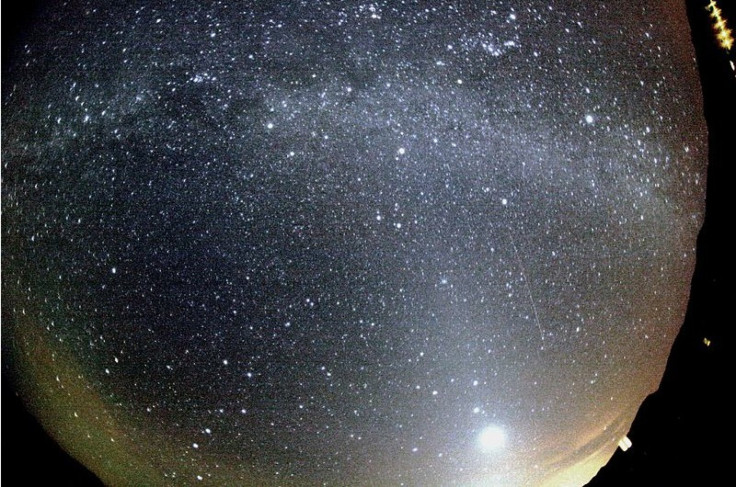Thanks to Haley's Comet, Orionid Meteor Showers 2011 Coming Next Week Amid Slender Moon

Haley's Comet will yield a nice spectacle next week -- the Orionid meteor showers 2011. And this year the viewing should be spectacular amid a slender moon.
To view it, you'll have to get up and outside before sunrise, but the so-called cosmic litter that Haley's Comet has left behind will yield this year's Orionids meteor shower show that will last for days, with an expected peak before dawn on October 22. You can also see the shower on other days before and after the peak.
Orionids are a sort of junior version of the Perseid meteor shower. The Orionids is the most prolific meteor shower associated with Haley's Comet, the best-known short period comet that is visible from Earth every 75 to 76 years. When Haley's Comet passes through the solar system, the sun melts some ice which lets rock particles break away from the comet.
These particles, or dust, continue on the comet's path, appearing as meteors when they pass through the Earth's upper atmosphere.
Haley's Comet also creates the Eta Aqualids which occur each year in May.
The Orionids are unique because they are one of just a small number of meteor showers that can be observed equally well from both the Northern and Southern hemispheres. One of the better annual displays with roughly 15 to 20 meteors per hour and as many as 20 to 25, the faint showers are best viewed in areas with little light pollution.
Thus, metropolitan areas, or urban locations, aren't the best for seeing the Orionid meteor shower next week.
The Orionid meteor showers will be active for several days before and after its peak, which is expected to occur from October 20 through October 24.
The meteors are known as Orionids due to fireballs that appear to fan out from a region north of Orion's second brightest star, ruddy Betelgeuse.
For prime viewing, one should consider that the constellation doesn't rise completely above the eastern horizon until after 11 p.m. and the best time to see it is between about 1 a.m. or 2 a.m. and 5 a.m. local time, according to a report from MSNBC.
Orionid meteors will begin to increase noticeably around Oct. 17, when they'll start appearing at about five per hour, writes Joe Rao, an instructor and guest lecturer at New York's Hayden Planetarium. After peaking on the morning of Oct. 22, activity will begin to slowly descend, dropping back to around five per hour around Oct. 26. The last stragglers usually appear sometime in early to mid-November.
This is a good year for seeing the Orionid meteor shower because on the morning of maximum because the moon will be slim in a crescent shape on the morning the Orionid meteor shower is expected to peak. Thus, the dim light will not pose much interference for seeing the Orionid meteor shower 2011 at its peak.
Last year, the opposite was true, meaning most did not get a good look at the Orionid meteor shower 2010 at peak because the moon was full and severely hampered the meteor display. This year, those outside in viewing hours with little light pollution can most likely attribute a meteor sighting to the Orionid meteor shower 2011.
They are easily identified ... from their speed, writes David Levy and Stephen Edberg in Observe: Meteors, an Astronomical League manual. At 66 kilometers (41 miles) per second, they appear as fast streaks, faster by a hair than their sisters, the Eta Aqualids of May. And like the Eta Aquarids, the brightest of family tend to leave long-lasting trains. Fireballs are possible three days after maximum.
© Copyright IBTimes 2024. All rights reserved.





















